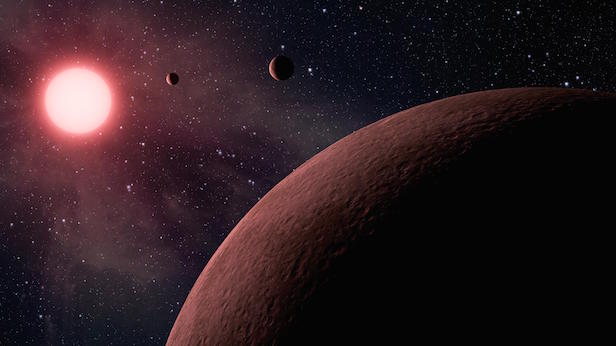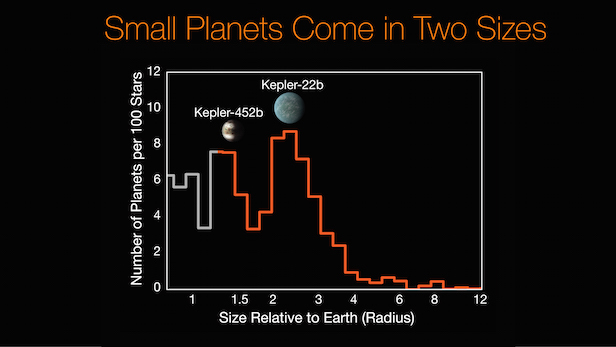Kepler survey shows a gap in the exoplanet family tree
The alien worlds discovered so far show an unexplained gap between two types of exoplanet

NASA’s space telescope has also identified 219 new planet candidates. Image credit: NASA/JPL-Caltech
As NASA’s Kepler space telescope finishes its final catalogue of the Cygnus constellation’s section of the sky, astronomers have now classified two distinct groups of exoplanets based on their size: rocky/super-Earth-like planets and mini-Neptunes. This classification comes after the spacecraft’s data analysis showed a lack of exoplanets with sizes between these two types.
Kepler was launched back in March 2009, and has gone on to identify 4,034 planetary candidates with nearly 3,500 confirmed so far. By combining its data with that acquired by the W. M. Observatory, the results have shown that there is a distinct reference to two types of exoplanets. The first is rocky planets similar to Earth that can be as large as 1.75 times the size of our home planet, when they’re that large they can also be considered super-Earths. There are also mini-Neptunes, which are worlds that enveloped in hydrogen and helium, and normally between 2 and 3.5 times the size of Earth.
The peculiar aspect of this discovery is that there are not many planets with sizes in-between these two sizes. This raises new questions for planet formation, as this gap between the two categories clearly states there is a process during formation that causes the planet to either result in a rocky-Earth or a mini-Neptune.

This histogram shows a clear lack of planets between the two distinct size classes: the rocky Earths and super-Earths (similar to Kepler-452b), and the mini-Neptunes (similar to Kepler-22b). Image credit: NASA/Ames/Caltech/University of Hawaii (B. J. Fulton]
One theory is that the exoplanet ends up acquiring enough gas to jump up to the status of mini-Neptune, as principal investigator Andrew Howard, professor of astronomy at the Caltech Institute Of Technology, Pasadena, explains. “A little bit of hydrogen and helium gas goes a very long way. So, if a planet acquires only one per cent of hydrogen and helium in mass, that’s enough to jump the gap,” he says. “These planets are like rocks with big balloons of gas around them. The hydrogen and helium that’s in the balloon doesn’t really contribute to the mass of the system as a whole, but it contributes to the volume in a tremendous way, making the planets a lot bigger in size.”
On the other hand, there’s the possibility that when the planet does have gas around it in its early ages, the parent star strips the gas away due to its intense radiation. “A planet would have to get lucky to land in the gap, and then if it did, it probably wouldn’t stay there,” says Howard. “It’s unlikely for a planet to have just the right amount of gas to land in the gap. Those planets that do have enough gas can have their thin atmospheres blown off. Both scenarios likely carve out the gap in planet sizes that we observe.”
This has called for more research to be done however, as this finding has laid a platform for astronomers to analyse the heavy-elements in the composition of mini-Neptunes. “We’re living in a golden age of planetary astronomy because we are finding thousands of planets around other stars,” says Erik Petigura, Hubble Postdoctoral Fellow also at Caltech. “We are currently working to understand what these mini-Neptunes are made of, which should help explain why these planets form so easily around other stars and why they didn’t form around the Sun.”
Keep up to date with the latest space news in All About Space – available every month for just £4.99. Alternatively you can subscribe here for a fraction of the price!




